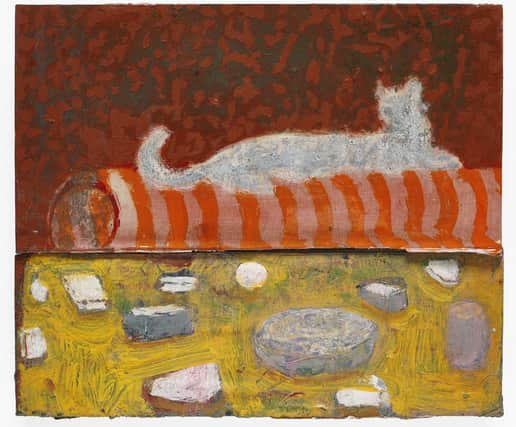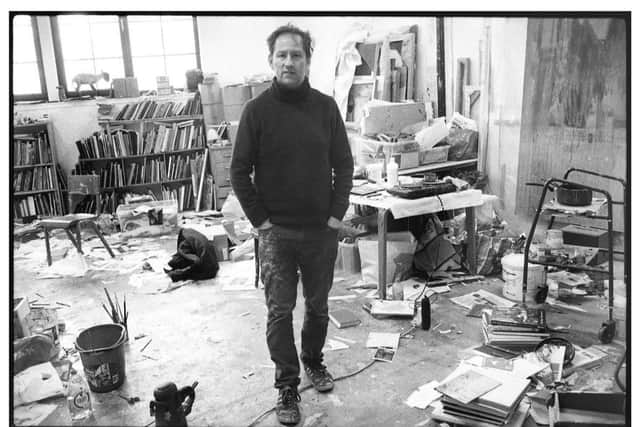New exhibition of work by artist Andrew Cranston at the Hepworth Wakefield


Cranston’s beautiful, evocative paintings feature everyday objects and subjects that strongly suggest a particular time and place, yet at the same time have a dream-like, elusive quality to them. They are the kind of works that encourage the viewer to stop, slow down and really take the time to be present with them. The 38 paintings on display include still life, landscape, seascapes, portraits and interior domestic scenes. They range from large-scale canvases to small-scale intimate works painted on old linen-bound hardback book covers.
Memory, and the act of trying to recapture past events that are just out of reach, is a key feature of Cranston’s work and artistic practice; he refers to it as ‘creative misremembering’. “A lot of it is about attempting to retrieve a memory and then trying to record it and visually explore it,” he says. “I think that the sort of mistakes, or the ‘faultiness’, of memory can be just as interesting, or more interesting, than being exact about it. We obviously alter things as we go all the time, especially if you are maybe trying to recall something that happened very early on in your life. We kind of piece it together in fragments and that for me is almost a creative act really.”
Advertisement
Hide AdAdvertisement
Hide AdHe says that much of this memory exploration initially came out of a project that he undertook with his father just over a decade ago. “It was not long before he died and he was really haunted by a house he used to live in when he was a child which had been knocked down in the 1950s,” he explains. “I got him to talk about it and I made some drawings and tried to piece together a picture of this house and his experiences around it. He had dementia at the time but he could recall those things from when he was very young really well – which is common with a lot of dementia – but it was hard to know what was real or a fiction. Artists are often working with versions of the world and versions of reality and the truth. I feel you can find a greater truth that way, although the details may not be precise.”


It means that a lot of his work has a sense of capturing a fleeting thought or emotion, something half-remembered that may escape you at any minute. It is so gently powerful and certainly draws you in. Some of the paintings of interiors give the impression that someone has just left, or is just about to enter, the room. There is a whole narrative hanging in the air that is so intriguing and compelling. And as many of the settings are familiar and everyday, it is also extremely relatable.
“In some ways I let ideas come to me,” says Cranston. “I have always felt that things are just under my nose – subject matter is not something to go searching for. I like to find potential in what you are doing, seeing and experiencing. Everyday life and ordinary things can seem quite extraordinary when you look at them for a long time. You can sometimes see them fresh and they take on a kind of strangeness. I don’t think of ordinary life as dull; I find it kind of miraculous.”
He tells me that in his early twenties when he was an art student, he became interested in Zen Buddhism and it has influenced his approach to his work in the thirty years since. “I read a couple of books on it at that time and it really interested me as a practice of trusting things, a way of detaching yourself and letting something natural happen,” he says. “It kind of made sense to me when it comes to creativity. I almost try not to think about it too much and trust my instincts.”
Advertisement
Hide AdAdvertisement
Hide AdHe says that painting appeals to him because it is a slow medium, both for the artist – some of his work takes years to complete – and for the audience. “There is a directness and immediacy about it, but it also slows you down. What I am trying to do is hold the viewer there for that time and encourage them to reflect and engage. What I am hoping for is that somebody finds something in the work that they can connect to.”
Andrew Cranston: What Made You Stop Here? is at the Hepworth Wakefield until June 2, 2024.